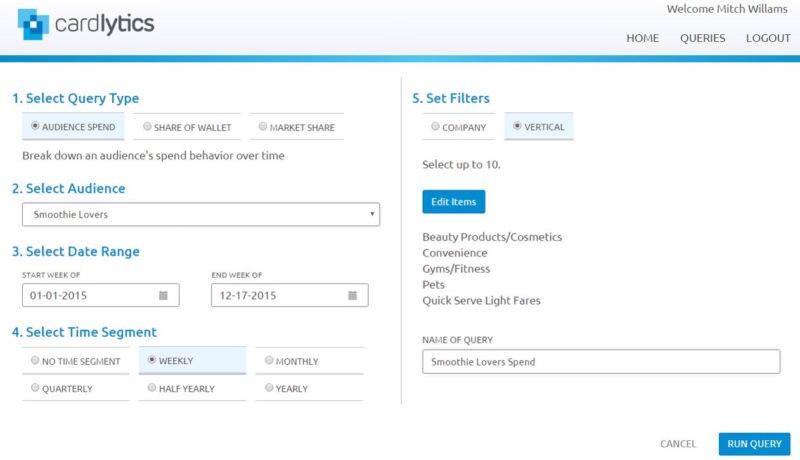Cardlytics Opens Up Its Treasure Trove Of Purchase Histories To Ad Targeting
Atlanta-based company is now making its 120 million anonymized profiles available beyond bank-related sites and apps.
Since 2008, Cardlytics has worked with more than 1,500 banks to build up a massive database of users’ purchase histories from credit cards, debit cards and electronic checking transfers.
It has used this treasure trove to target advertisers’ rewards campaigns to those users inside bank sites and apps, promoting customer loyalty by white-labeling its platform to the banks.
Someone who spends big on sporting equipment, for instance, might see discount coupons for golf clubs when she logs into her bank’s app or site. Cardlytics says it has purchase histories for about 120 million accounts in the US.
Today, the Atlanta-based company is making that huge mound of first-party, anonymized data available to advertisers on other sites and apps — plus social media, email or addressable TV — outside of the banking channel.
It is launching Cardlytics’ Platform Solutions, which contains three separate products — Audiences, Measurement and Insight. The platform is available via a dashboard or APIs.
Audiences is the product that enables the purchase data to be used outside of the banking channel.
While a variety of other targeting data platforms build on first-party data, Cardlytics doesn’t have to make inferences about what you might be interested in buying, as the others do. It knows what you’ve bought.
When a user logs in to a participating bank’s site or app, the identified user is tracked via a cookie on the desktop web, through device ID on mobile or other means. Participating banks, which will share in the revenue from this new advertising targeting platform, include Bank of America, Citibank and PNC.
These logged-in users are, of course, attached to the record of their purchases made with a bank-associated credit card, debit card or checking account.
The users’ identities are anonymized before they reach Cardlytics, but the company can anonymously track the users and their associated purchase history as they go to, say, ESPN’s web site, app or other addressable environments. The ads can then be targeted at them, on those sites or elsewhere, based on their purchase history.
Since Cardlytics has access to the user’s purchase history — as it relates to the bank’s financial prouducts — it can also trace if the ad results in a purchase. This is made possible in the Measurement part of the platform, although Chief Marketing Officer Dani Cushion told me Cardlytics is not really selling this specifically as an attribution service.
While Measurement offers campaign-focused analytics, the Insights product provides a broader set of analytics that is company-focused. Cushion said it provides such insights as what products — besides yours — your customers tend to buy.
Contributing authors are invited to create content for MarTech and are chosen for their expertise and contribution to the search community. Our contributors work under the oversight of the editorial staff and contributions are checked for quality and relevance to our readers. MarTech is owned by Semrush. Contributor was not asked to make any direct or indirect mentions of Semrush. The opinions they express are their own.
Related stories

